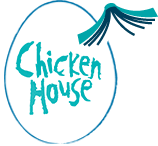Wondering what to do post-NaNoWriMo?
Finished that novel? Congratulations! Our wonderful Editorial Director Rachel Leyshon is here to help with the next steps ...
So now that NaNoWriMo is finished – what next?
Rewriting and editing is the most important part of writing a novel – but being an editor, I would say that! Sometimes, stories arrive in a writer’s head fully formed, but more often than not, it’s only with the writing of the first draft that you come to terms or settle down with the story you want to tell. Sometimes you end up with an entirely different story from the one you originally intended – that’s creativity for you.
So take this first post-NaNoWriMo weekend off and do something completely different. It’s really important to get perspective – in fact, better to put it away for a couple of weeks, if you can bear to (unless you’re now on a super-creative roll). When you feel ready – and strong – and you have a clear few hours ahead of you – take a deep breath, print out the manuscript on paper (don’t read it onscreen before you do this), then read it again. Aloud.
This is an analytical read, not the creative splurge of the past month. It will take you longer than skimming through it on your laptop, but it is the most useful thing you can do – you will instantly know where you’re boring even yourself and when you start to feel good about the story. See if you can understand why you feel the way you do.
Does the descriptive prose go on too long? Is there enough dialogue? Does the dialogue sound natural? Do you understand your main character’s motivations throughout? What’s the peril? Is your villain doing his or her job with intent?
Put post-its by the bits you still love. Focus on the positives – as with anything in life, it’s always easier to remember the negatives. And because many people write their first novels in secret, you’ve got no one to keep your spirits up – so you’ll have to do it for yourself!
It’s very easy to become demoralised – even the great writers have terrible days when they think they’re no good. You’ll read it and feel the cringe factor, or sense the chasm of despair yawning beneath you (if you’ll excuse the lurid metaphor – must edit myself …) but no one has to witness your mistakes – and you have as much time as you need to fix them. You’re in control.
Don’t worry about the punctuation or the grammar. It’s storytelling you need to focus on, and the ability to describe what your book is about very quickly. Try writing a blurb.
It’s very tempting to press send right away, but don’t send out too soon … Every editor and agent is deluged at all times, but especially around the book fairs in March and October, and because of the quantity of submissions, it’s unlikely they’ll read many versions of the same book. So much better to take your time and send out the best version of your book that you can imagine.
NaNoWriMo is a fantastic turbo injection of discipline, but don’t worry if you haven’t got to the fabled 50,000 words – writing is a craft, a way of life for many people, and it takes time. You’ll never stop learning – editors included.
And above all, remember that in our currently weird, disjointed world, writing stories for children is a joyful thing. Keep thinking of your readers.
Follow Rachel on Twitter: @rachel_leyshon


No comments yet!
Why not be the first?